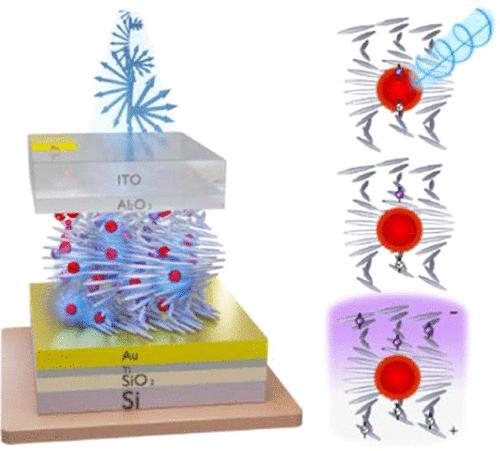Our official English website, www.x-mol.net, welcomes your
feedback! (Note: you will need to create a separate account there.)
用于增强电荷分离和量子限制 Stark 效应的手性向列纤维素纳米晶膜
ACS Nano ( IF 15.8 ) Pub Date : 2024-10-09 , DOI: 10.1021/acsnano.4c04727 Gur Aminadav, Omer Shoseyov, Shylee Belsey, Daniel Voignac, Shira Yochelis, Yael Levi-Kalisman, Binghai Yan, Oded Shoseyov, Yossi Paltiel

|
高效的电荷分离在各种光电系统中至关重要,但它仍然带来重大挑战。基于手性生物分子可以充当电子自旋过滤器的最新证据,本研究旨在将手性驱动电荷分离的应用从分子水平扩展到中尺度和超分子尺度。利用源自地球上最丰富的生物材料纤维素的纤维素纳米晶体 (CNC),本研究利用它们自组装成手性向列结构及其介电特性。介绍了一种器件,其特点是由 CNC 和量子点 (QD) 组成的手性向列杂化膜,用氧化铁纳米颗粒装饰。使用量子限制斯塔克效应 (QCSE) 探测电荷分离,我们揭示了对光的圆偏振和薄膜的手性向列结构的显着敏感性。这种方法实现了有效、持久的电荷分离,无论是在局部还是在超过 1 μm 的长度尺度上,都实现了潜在的应用,例如将光伏电池与电容相结合的自组装设备以及光学电场混合生物传感器。

"点击查看英文标题和摘要"





















































 京公网安备 11010802027423号
京公网安备 11010802027423号